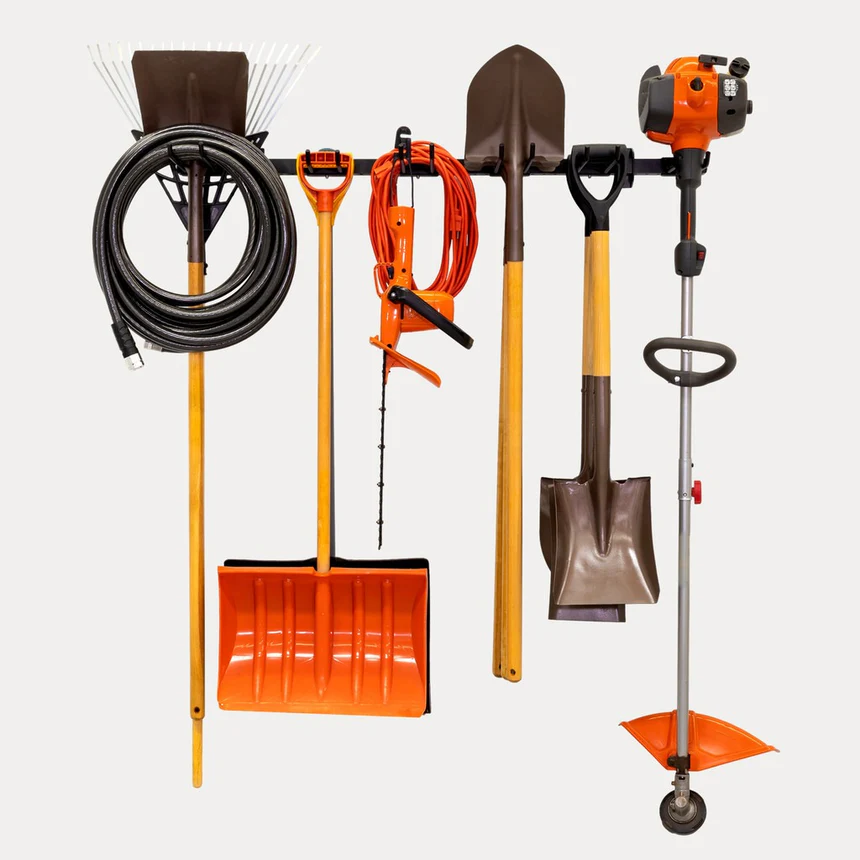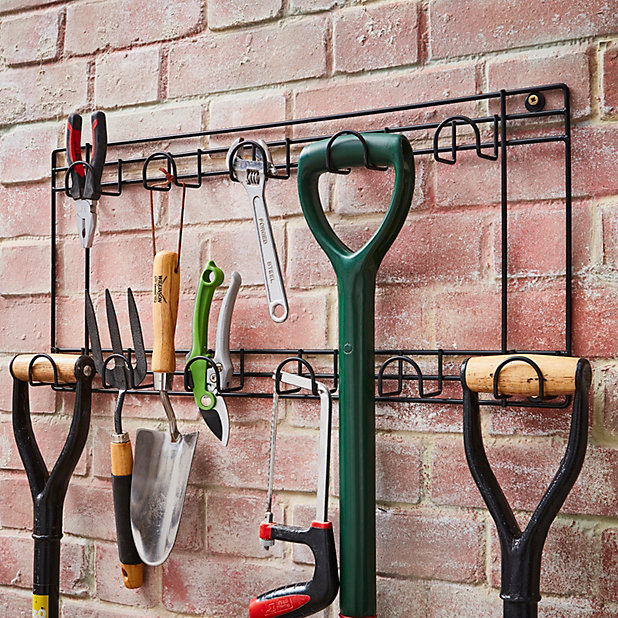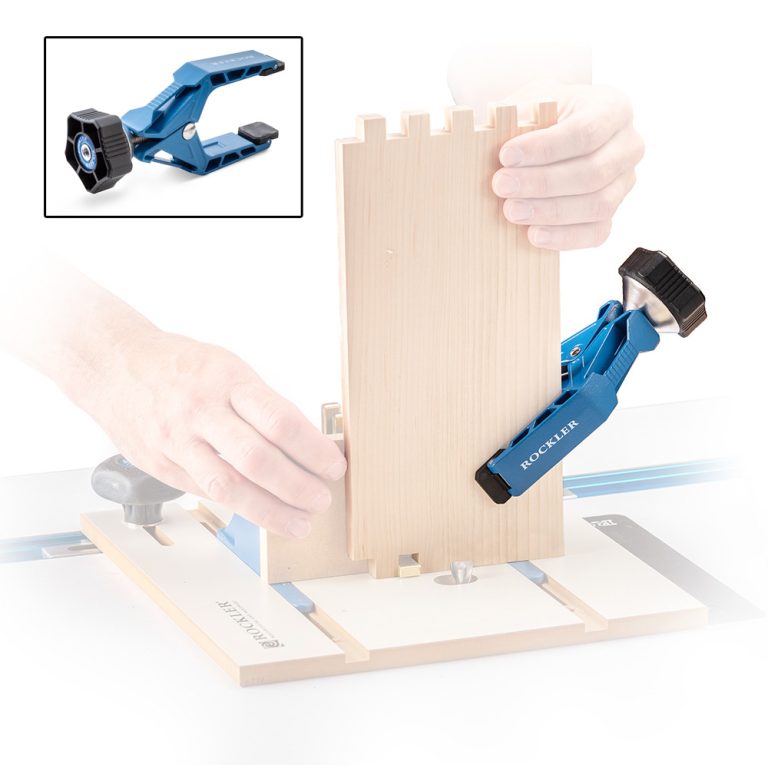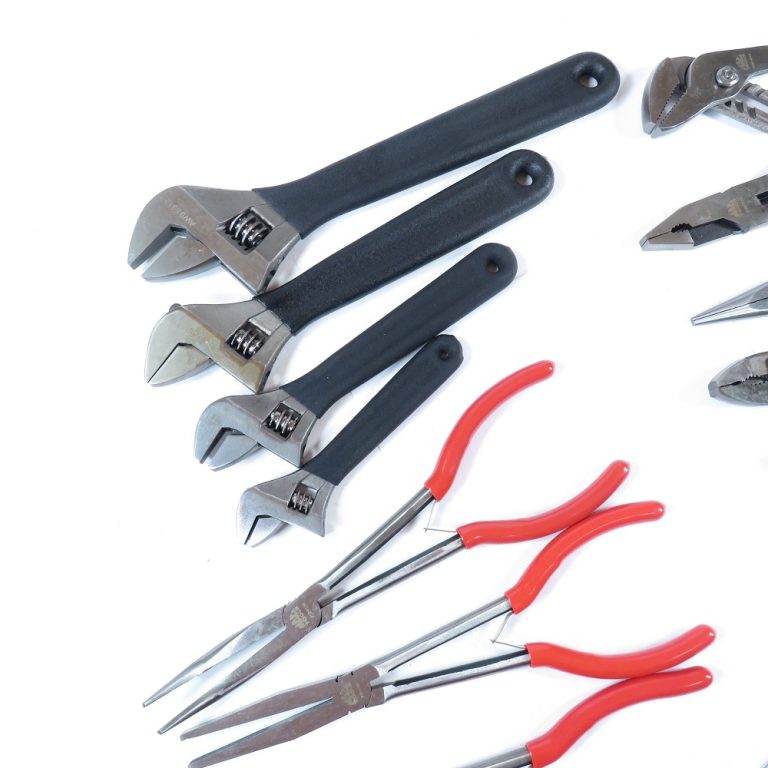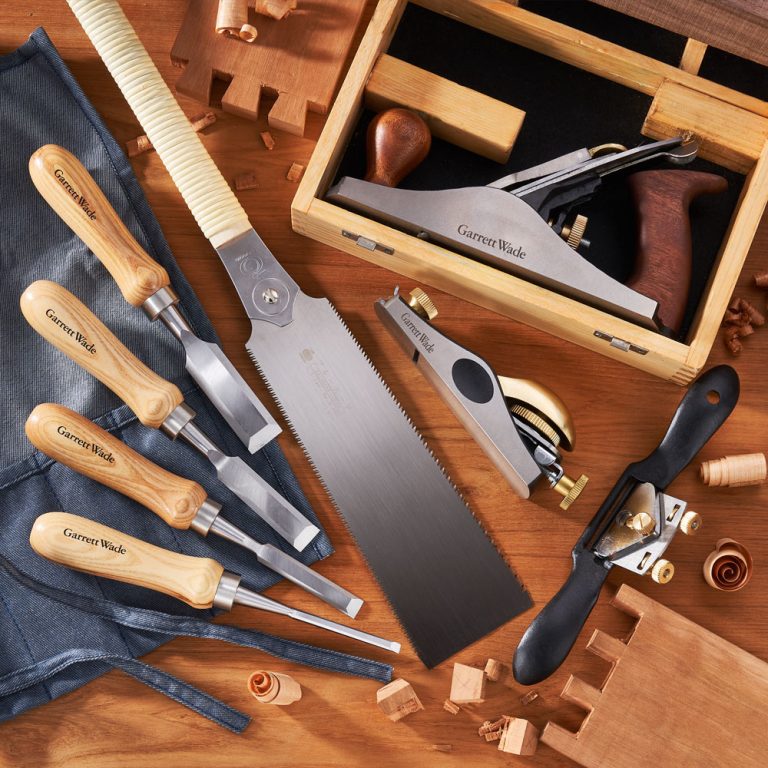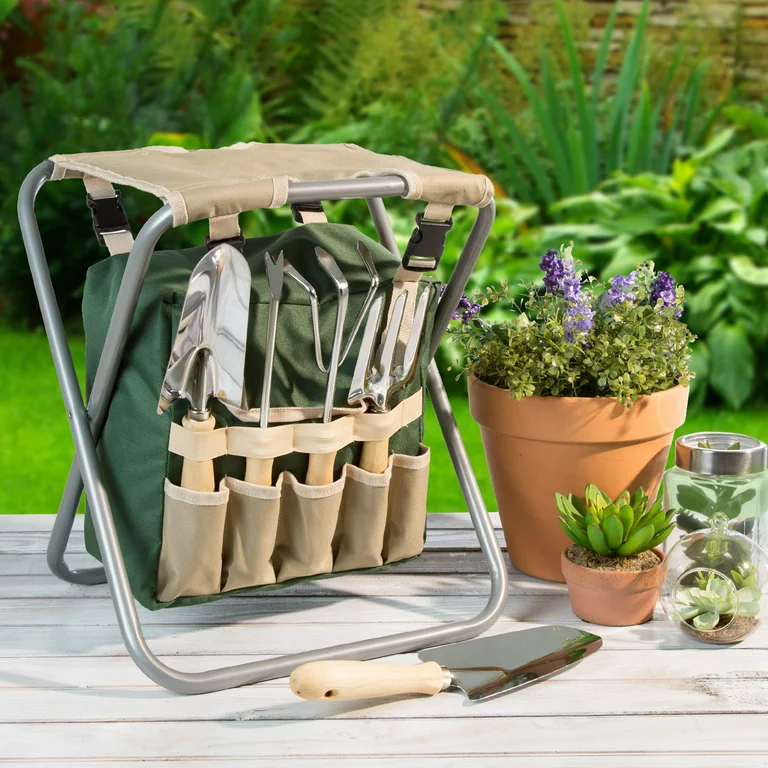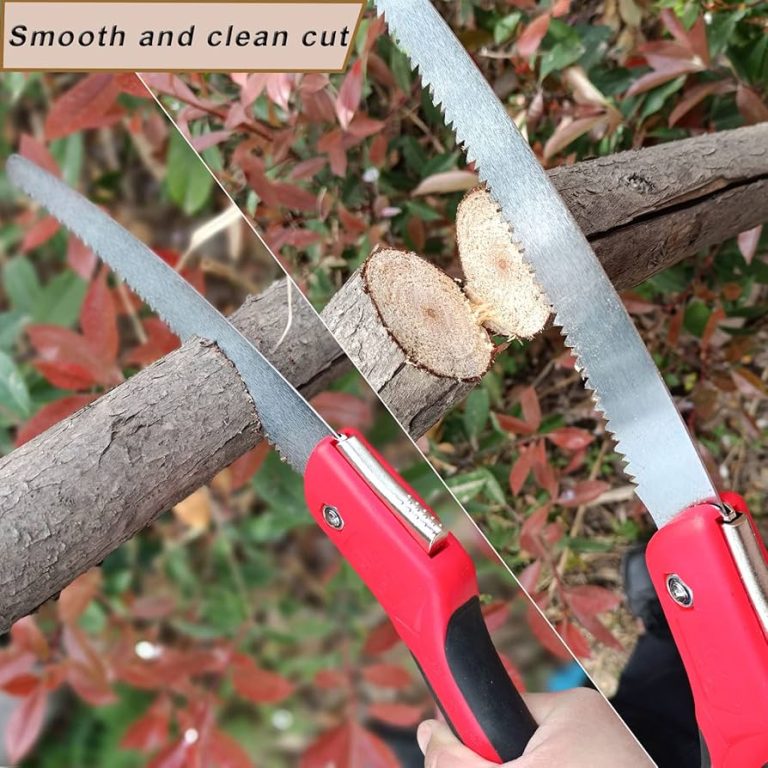The Importance of Garden Tool Organization
Garden tool racks offer a practical solution for organizing outdoor equipment. They keep tools accessible and protected from the elements. A well-designed rack can transform a cluttered shed into an efficient workspace. This blog explores the benefits of garden tool rack and how to choose the right one for your needs.
Proper tool organization saves time and extends equipment life. A garden tool rack prevents damage caused by improper storage. It reduces the risk of accidents from tripping over misplaced tools. Organized tools make gardening more enjoyable and productive. A rack system allows quick identification of needed equipment. It encourages proper tool maintenance and cleaning. Organized storage protects tools from rust and weathering. A tidy tool area creates a more pleasant gardening experience. Efficient organization can even inspire more frequent gardening. A well-maintained tool collection adds value to your gardening investment.
Types of Garden Tool Racks
Garden tool racks come in various designs to suit different needs. Wall-mounted racks maximize vertical space in sheds or garages. Freestanding racks offer flexibility in placement and storage capacity. Wheeled racks provide mobility for tools around the garden. Pegboard systems allow customizable tool arrangements. Horizontal racks work well for long-handled tools like rakes and shovels. Vertical racks efficiently store smaller hand tools. Corner racks make use of often-wasted space. Ceiling-mounted racks keep tools off the ground entirely. Combination racks offer storage for both large and small tools. Each type has unique advantages for different garden sizes and tool collections.
Choosing the Right Garden Tool Rack
Selecting the perfect garden tool rack involves several considerations. Assess the available space in your storage area. Count the number and types of tools needing storage. Consider the weight capacity required for your tool collection. Look for durable materials that withstand outdoor conditions. Ensure the rack design accommodates your most-used tools. Check for adjustable features to adapt to changing needs. Consider ease of installation and any required mounting hardware. Look for racks with protective coatings to prevent rust. Evaluate the accessibility of tools when stored on the rack. Choose a style that complements your garden aesthetic if visible. Balance cost with quality and expected longevity of the rack.
DIY Garden Tool Rack Ideas
Creating a DIY garden tool rack offers personalized storage solutions. Repurpose pallets into vertical tool organizers. Convert old ladders into leaning tool racks. Use PVC pipes to create custom-sized tool holders. Transform wooden crates into mobile tool caddies. Upcycle old kitchen utensil holders for small garden tools. Create a tool rack from reclaimed wood and metal hooks. Build a rolling garden cart with built-in tool storage. Construct a fold-down workbench with integrated tool storage. Use old gutters as long, narrow tool organizers. These DIY projects can be tailored to specific tool collections and spaces. They offer budget-friendly alternatives to store-bought racks.
Maintaining Your Garden Tool Rack
Regular maintenance keeps garden tool racks functional and attractive. Clean the rack periodically to remove dirt and debris. Tighten any loose screws or bolts to ensure stability. Apply rust-resistant paint or sealant to protect metal racks. Replace worn-out hooks or holders to prevent tool falls. Reorganize tools seasonally for optimal efficiency. Inspect the rack for any damage or wear regularly. Lubricate moving parts on wheeled or adjustable racks. Ensure proper weight distribution to prevent tipping. Clean tools before storing to prevent rack contamination. Address any issues promptly to extend the rack’s lifespan. Well-maintained racks provide reliable tool storage for years.
Innovative Features in Modern Garden Tool Racks
Modern garden tool racks incorporate innovative features for enhanced functionality. Built-in wheels allow easy relocation of fully loaded racks. Adjustable hooks accommodate tools of various sizes. Some racks include built-in potting benches for added utility. Weather-resistant covers protect tools in outdoor settings. Modular designs allow for expansion as tool collections grow. Solar-powered lighting improves visibility in dark sheds. Integrated tool sharpeners provide convenient maintenance options. Some racks feature built-in irrigation systems for nearby plants. Smart racks with inventory tracking help manage tool collections. These innovations improve the efficiency and convenience of garden tool storage.
Effective tool organization on a rack maximizes gardening efficiency. Group similar tools together for easy access. Place frequently used tools at eye level for quick retrieval. Store seasonal tools on higher or lower levels accordingly. Use color-coding systems to identify tool categories quickly. Implement a ‘return after use’ policy to maintain organization. Label sections of the rack for clear tool placement. Arrange long-handled tools with heads upward for stability. Keep sharp tools in protective sheaths when stored. Position heavier tools lower on the rack for safety. Leave space between tools to prevent tangling or damage. Regular reorganization ensures the system remains effective over time.
The Impact of Proper Tool Storage on Garden Productivity
Well-organized tools significantly enhance garden productivity. Easy access to tools reduces time spent searching. Proper storage prevents tool damage, ensuring they work efficiently. Organized racks encourage regular tool maintenance and cleaning. A tidy tool area allows for quicker start and finish to gardening tasks. Visible tool storage serves as a reminder for pending garden tasks. Efficient organization can inspire more frequent gardening sessions. Well-maintained tools perform better, producing superior garden results. Organized storage prevents loss of small tools or accessories. A systematic approach to tool storage fosters a more professional gardening practice. Improved productivity leads to a more enjoyable and rewarding gardening experience.

Garden Tool Racks for Small Spaces
Small gardens and limited storage areas benefit from space-saving rack designs. Over-the-door racks utilize often overlooked vertical space. Collapsible racks offer storage that can be tucked away when not in use. Magnetic strips work well for small metal tools in tight spaces. Wall-mounted folding racks provide storage that doesn’t protrude when folded. Stackable tool caddies offer flexible storage options. Hanging pocket organizers work well for small hand tools. Corner shelf units maximize typically wasted space. Pegboard systems allow customizable arrangements in small areas. These space-efficient solutions keep tools organized without overwhelming limited areas. Creative use of small-space racks can significantly improve storage in compact gardens.
Incorporating Tool Racks into Garden Design
Garden tool racks can become attractive features in outdoor spaces. Choose rack designs that complement garden aesthetics. Integrate tool storage into decorative garden structures. Use living walls or trellises as dual-purpose tool storage. Incorporate tool racks into the design of garden sheds or greenhouses. Create dedicated tool stations within the garden layout. Use decorative screens to conceal utilitarian tool storage. Match rack materials to existing garden furniture or structures. Position racks to create visual interest in the garden. These design-conscious approaches blend functionality with garden beauty. Well-integrated tool storage enhances overall garden appeal.
Environmental Considerations in Tool Rack Selection
Eco-friendly gardeners prioritize sustainable options for tool storage. Look for racks made from recycled or sustainable materials. Choose durable designs that won’t need frequent replacement. Opt for locally-made racks to reduce transportation emissions. Consider racks that can be easily recycled at the end of their life. Use natural materials like bamboo or reclaimed wood for eco-friendly options. Avoid racks with harmful finishes or treatments. Look for manufacturers with sustainable production practices. Choose multifunctional racks to reduce overall resource consumption. These environmentally conscious choices align tool storage with sustainable gardening practices. Eco-friendly racks contribute to a more sustainable overall garden setup.
Tool Racks for Specialized Gardening Equipment
Specialized gardening often requires unique tool storage solutions. Bonsai tool racks need compartments for delicate pruning tools. Hydroponic gardening tools benefit from water-resistant storage options. Orchid care equipment requires racks with gentle, cushioned storage. Topiary tools need racks that accommodate various shear sizes. Herb garden tool racks should include space for harvesting baskets. Fruit tree care requires racks that can hold long pruning poles. Vegetable garden tool racks need space for bulky items like watering cans. These specialized racks cater to specific gardening niches. They ensure proper care and organization of specialized equipment. Tailored storage solutions enhance the practice of specialized gardening techniques.
Proper tool storage plays a crucial role in garden safety. Racks prevent tripping hazards from tools left on the ground. Secure storage reduces the risk of injury from falling tools. Organized racks make it easier to spot missing or damaged tools. Proper storage extends tool life, ensuring they remain safe to use. Racks with locking mechanisms keep tools away from children. Visible storage reminds gardeners to return tools safely after use. Well-organized tools are less likely to be misused or mishandled. Racks can include first aid kit storage for quick access. Safe storage practices contribute to an overall culture of garden safety. A secure tool storage system provides peace of mind for gardeners.
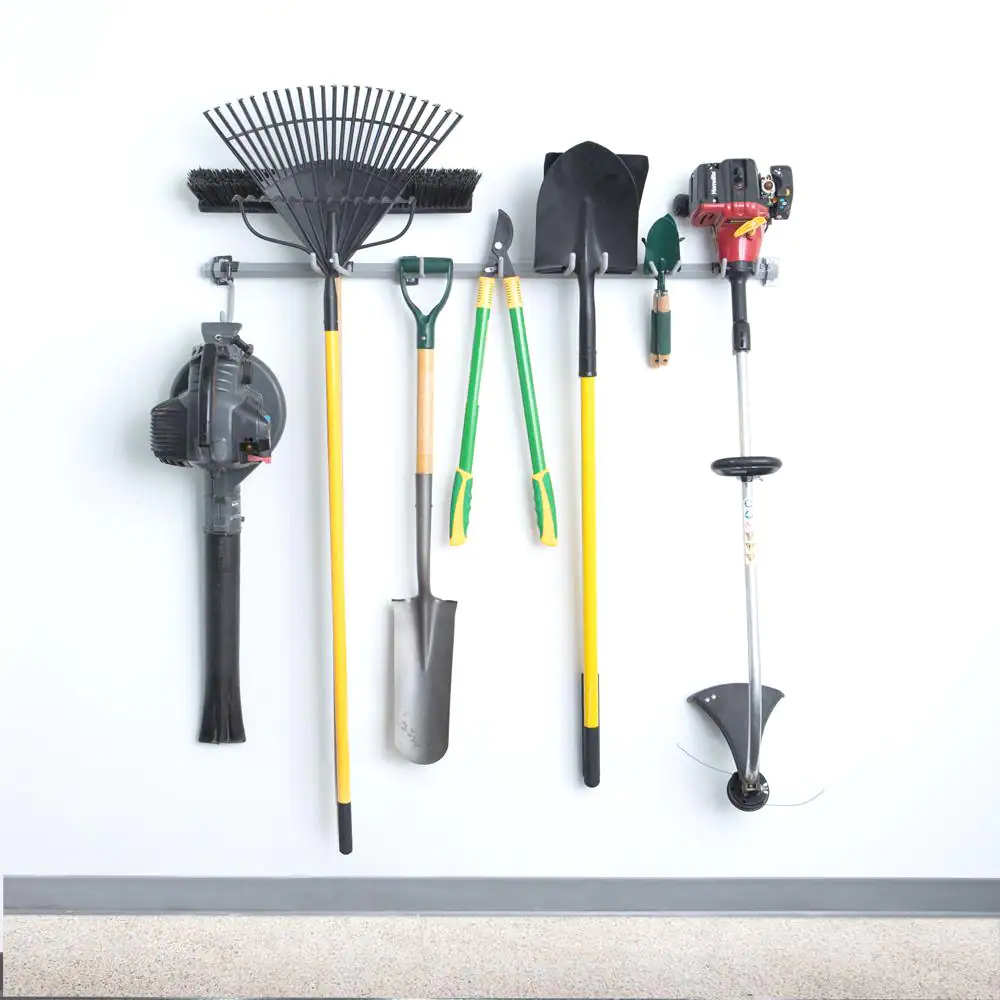
Seasonal Considerations for Garden Tool Racks
Garden tool needs change with the seasons, affecting rack usage. Spring calls for easy access to planting and soil preparation tools. Summer racks should prioritize watering and maintenance equipment. Fall requires prominent storage for rakes and leaf collection tools. Winter storage should protect tools from harsh weather conditions. Seasonal reorganization keeps the most-needed tools accessible. Off-season tools can be stored in less accessible rack areas. Some racks offer removable sections for seasonal adjustments. Weather-resistant covers become crucial for outdoor racks in winter. Seasonal tool rotation encourages regular maintenance checks. Adapting rack organization to seasonal needs optimizes gardening efficiency year-round.
The Future of Garden Tool Storage
Emerging trends indicate exciting developments in garden tool storage. Smart racks with inventory tracking systems are becoming available. Solar-powered racks with built-in charging stations for electric tools are emerging. Modular, expandable systems adapt to changing tool collections. Ergonomic designs focus on reducing strain during tool retrieval. Integration with smart home systems allows for automated tool inventory. Advanced materials offer improved durability and weather resistance. Customizable 3D-printed racks cater to unique tool collections. Eco-friendly, biodegradable materials are being explored for rack construction. These innovations promise to revolutionize garden tool organization. Future developments will likely focus on sustainability and integration with smart garden systems.
